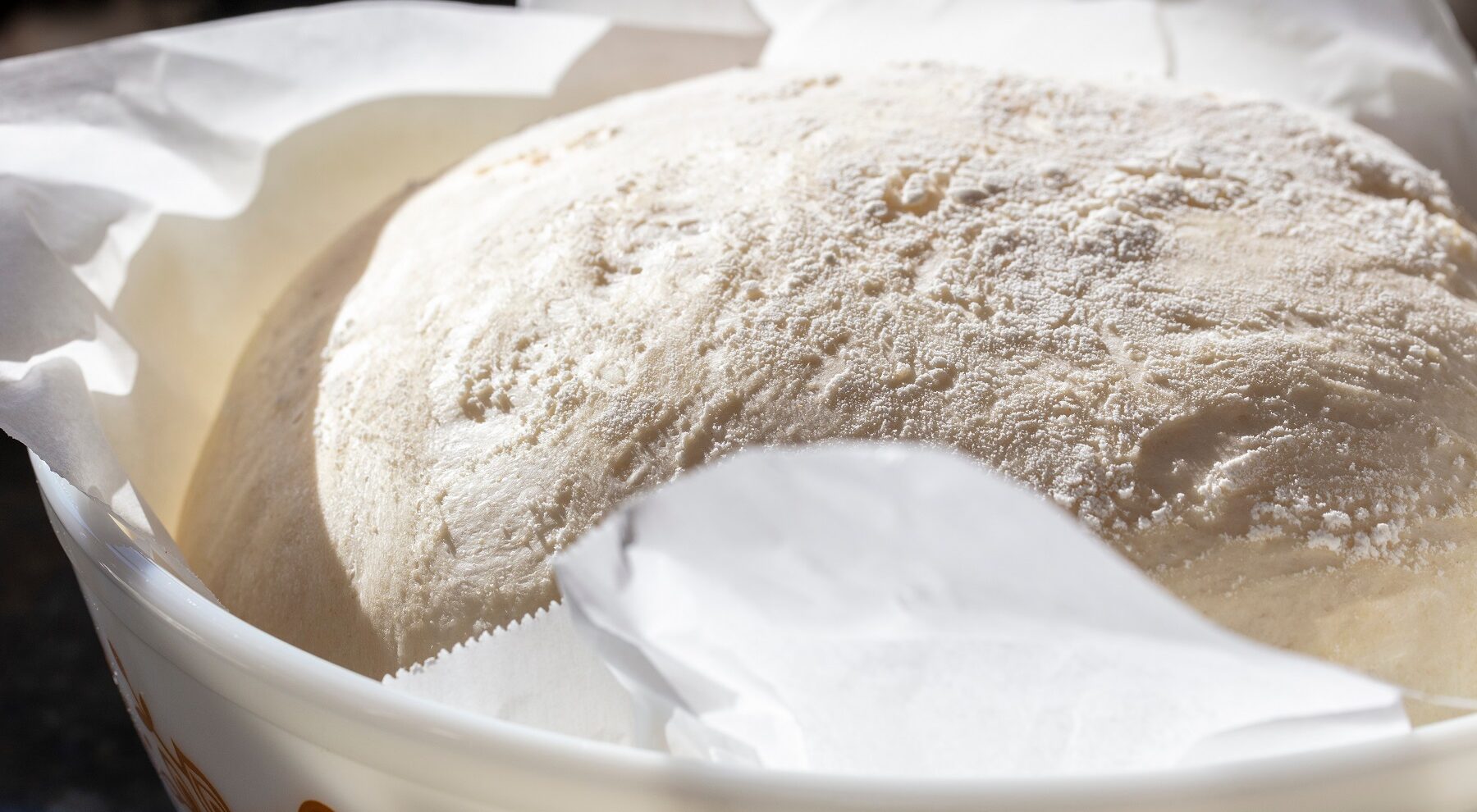10 Points About Growing Bacteria for Healthy Natural Sourdough Bread. Sourdough bread is a delicious treat and a source of healthy bacteria that can support our digestive system. Making sourdough bread requires growing a live culture of bacteria that ferments the dough and gives it its unique flavor and texture. In this article, we will systematically explore the process of growing bacteria for healthy natural sourdough bread.
Selection of ingredients for a natural sourdough bread
To grow bacteria, you only need a few basic ingredients: flour and water. It is important to choose high-quality flour, ideally, whole wheat or rye flour, as they are a rich source of natural yeast and bacteria. Ensure the water is free of chlorine and other chemicals, as these can inhibit bacterial culture.
Preparing the approach
Mix flour and water in a clean glass container for the sourdough starter. Stir the mixture thoroughly until smooth, and cover the container loosely with a clean kitchen towel or a lid that is slightly ventilated. Let the starter sit and mature at room temperature to allow the natural yeasts and bacteria from the flour and air to multiply.
Maintaining the bacterial culture
The bacterial culture needs to be maintained regularly to maintain its activity. Remove part of the sourdough starter daily and refresh it with fresh flour and water. Regular feeding gives the bacteria and yeast the nutrients to thrive and ferment the dough.
Observation and adaptation
Observing the culture and looking for signs of activity while growing bacteria is important. A healthy sourdough culture should form bubbles and develop a pleasant, slightly sour smell. If the culture smells unusual or shows signs of mold growth, it is important to discard it and start the process over.
 Use of sourdough culture
Use of sourdough culture
Once your sourdough culture is active and healthy, you can use it to bake delicious natural sourdough bread. Mix a certain amount of the sourdough starter with flour, water, and salt to knead the dough. Then, let the dough rest and ferment before baking to make a wonderfully aromatic and healthy natural sourdough bread.
Making natural sourdough bread is a culinary art and a way to reap the health benefits of live bacteria. You can grow your bacterial culture and enjoy delicious, healthy sourdough bread at home with patience and care.
The art of long-term care of sourdough cultures
In the world of baking, there is a venerable tradition that many bakers have maintained for generations: the long-term care of sourdough cultures. These live cultures of natural yeasts and bacteria are carefully nurtured and passed down by bakers, often for decades or even longer. This article will examine the art and importance of this long-term relationship between baker and sourdough culture.
The tradition of long-term care
Cultivating a sourdough culture over a long period is a tradition rooted in many cultures worldwide. Many bakers consider their sourdough culture a treasure passed down from generation to generation. Over time, these cultures develop a unique composition of yeasts and bacteria that give natural sourdough bread its characteristic taste, texture, and shelf life.
The importance of continuity
Continually maintaining a sourdough culture is crucial for the quality of natural sourdough bread. Regular feeding and baking keep the culture active and vibrant, allowing its aromatic and fermentative properties to develop and improve.
Bakers who have cultivated their sourdough culture for decades develop a deep understanding of their culture over time and can make subtle adjustments to optimize the quality of their bread.
The art of adaptation
Maintaining a sourdough culture requires patience, attention, and a certain amount of adaptability. Bakers must carefully monitor their culture, paying attention to changes in activity, smell, and consistency. They can adjust their feeding and baking regimen to keep their culture healthy and vibrant.
Passing on the legacy
For many bakers, passing on their sourdough culture to the next generation is of utmost importance. These traditions and the secrets and techniques required to maintain a vibrant and healthy sourdough culture are often passed down from mouth to mouth. By passing on this heritage, the tradition of sourdough bread baking is kept alive and preserved for future generations.
Long-term care of sourdough cultures is an art that has endured and continues to play an important role in baking. Through the bakers’ dedication and commitment, this living heritage is preserved and nurtured to create delicious natural sourdough bread of unparalleled quality.
Conclusion
Cultivating Bacteria for Healthy Natural Sourdough Bread is a culinary art and a source of healthy bacteria that can support our digestive system.
The process includes selecting high-quality ingredients such as wholemeal flour and chlorine-free water, preparing the sourdough starter, regularly maintaining the bacterial culture, and producing the sourdough bread.
This long-term relationship between baker and sourdough culture, often maintained for generations, is crucial to the quality of sourdough bread. The art of adapting and passing on these traditions plays an important role in preserving this living heritage.
In summary, the long-term cultivation of sourdough cultures is a timeless art that plays an important role in baking and producing unparalleled quality delicious sourdough bread.
#SourdoughBread #BacteriaCulture #TraditionalBaking #HealthyEating #LongTermCare



 Use of sourdough culture
Use of sourdough culture